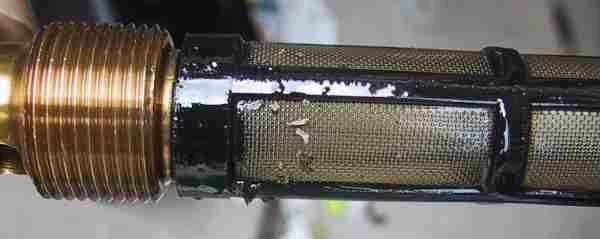
Ducati engines are equipped with two oil filters. A screen to trap larger particles and a filter cartridge to trap the smaller debris. Every 2,000 - 3,000 miles the oil should be changed, the filter replaced, and the screen cleaned.
It’s very important that screen be removed and inspected for debris at each oil change. Some dealers don't do it, explaining that the blockage to flow is small - so don’t worry. Even if it is done, the early warning signs from particles on the screen are often ignored. The most common rationale being that the filter screen captures particles of aluminum remaining from the machining process, so seeing them shouldn’t necessarily be cause for alarm. At your first oil change this argument has merit, but if you see particles at subsequent changes you should investigate further.
As most of you know by now, there are two problems common to Ducatis that can be identified by, and diagnosed by the particles they deposit on the filter screen.
The first problem is a design flaw in the pre-2000 model-year bikes that have an aluminum crankshaft oil galley plug that can loosen and back-out. In doing so, the rotation of the crankshaft will machine the plug down until the plug eventually comes out and the engine experiences a catastrophic loss of oil pressure that destroys the main bearings (among other things.) The aluminum particles will end-up on the filter screen.
The second problem is the design problem with the chrome plating flaking-off the cam-contacting surface of the rocker arms. The best way to know if you have rocker problems is to pull the cams and look, but your dealer won't do this unless you authorize an additional labor charge. Chrome particles on the filter screen will give you a good reason to spend the money to have them do this.
Chrome and aluminum are non-magnetic so they don’t attach themselves to the magnet on the drain plug. So how do you tell if you have chrome or aluminum particles on your filter screen?
Here’s a simple test.
Draw a small amount of battery acid and put the particles in it. Battery acid is dilute sulfuric acid, so when you add chromium to it you’ll get a release of hydrogen bubbles and the chromium will turn the darker violet color of chromium sulfate. Aluminum doesn’t react.
For you chemistry majors:
2Cr + 3H2SO4 > Cr2 [SO4]3 + 3H2